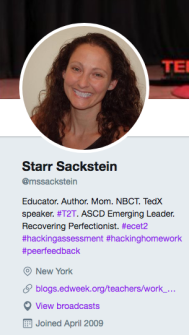
“Every move you make. Every step you take... I’ll be watching you.”
Whether it is big brother or The Police, since I started working as an administrator, I feel like my every move is being watched and has been watched since folks found out I was being brought in.
Suddenly, everything I said on any of my became fodder for conversation that I found out about through the grapevine.
(Ironically, I’ve never been the type to participate in gossip at any level. It’s a waste of time. However, I’m finding it’s good to know the rumblings as an administrator so I can at least know what is being said and can make decisions with this knowledge.)
As a teacher, I felt a lot more privacy and had a range of freedoms I didn’t realize existed until now.
Sure, people outside of my building were watching my moves, but my colleagues and administrators took less of an interest.
However, rather than close up shop on my social media accounts, I choose to allow myself to be publicly vulnerable.
There are a couple of things I know for sure:
- Being new at something means I have a lot to learn and since I have the most amazingly talented , it seems foolish to not tap into them as resources.
- Knowing myself as a learner, I want to be better than just good at what I’m doing, so I recognize my deficiencies and work to make them better regularly. Whether reading, taking classes, observing or asking for help, in order to improve, I must recognize the areas that need improvement first.
As leaders, we must be for our staff and students; in order to grow and progress, we must first recognize areas of need so that we can set goals to improve. I’m not ashamed that I have areas in need of improvement. My old job was vastly different than my new one, but I know I didn’t know anything when I started teaching and I know what my learning trajectory was in that situation.
Putting the first is always what drives me and being an intrinsically motivated person, I do whatever it takes to be my best. These expectations are always high and I’d never expect something of a colleague, faculty member, or student that I wouldn’t do myself.
So as I continue to consider how I want to conduct myself online, it’s with fearlessness that I will put myself out there. I’m not afraid to not know something I couldn’t possibly know. Every system is different and as I navigate through my new one, I will continue to ask questions, listen copiously, and slowly start to share my ideas.
Although I want to be viewed as an ally as that is my intention for staff, change is going to happen and therefore I expect a little resistance, although I am hopeful to ease the worries. As we start to transition, I will promise to be as transparent as I can be with the information I have. And if I don’t have the information, I will do my best to get it since I recognize that inherent fear associated with change.
Learning environments have changed and so have the roles of leaders in schools. As we become more global in our capacity in the world, so much the collaborative efforts of leadership in schools like the rest of the world. We are a team and must behave as one to model for our students what it looks like.
As we grow together as a team, I have high hopes that I can ease the woes of anticipation. Although my position title preceeds me as a person, it is my character and willingness to lead from the middle with my team that I hope drives our ability to do what’s best for kids.
We have a lot to learn from each other and therefore we have to develop trusting relationships for the benefit of the whole school community. I can only hope that as I model my growth mindset, so too will my staff learn that this is a positive for everyone, not a deficit.
New school leaders, how do you handle your social media presence? Please share.